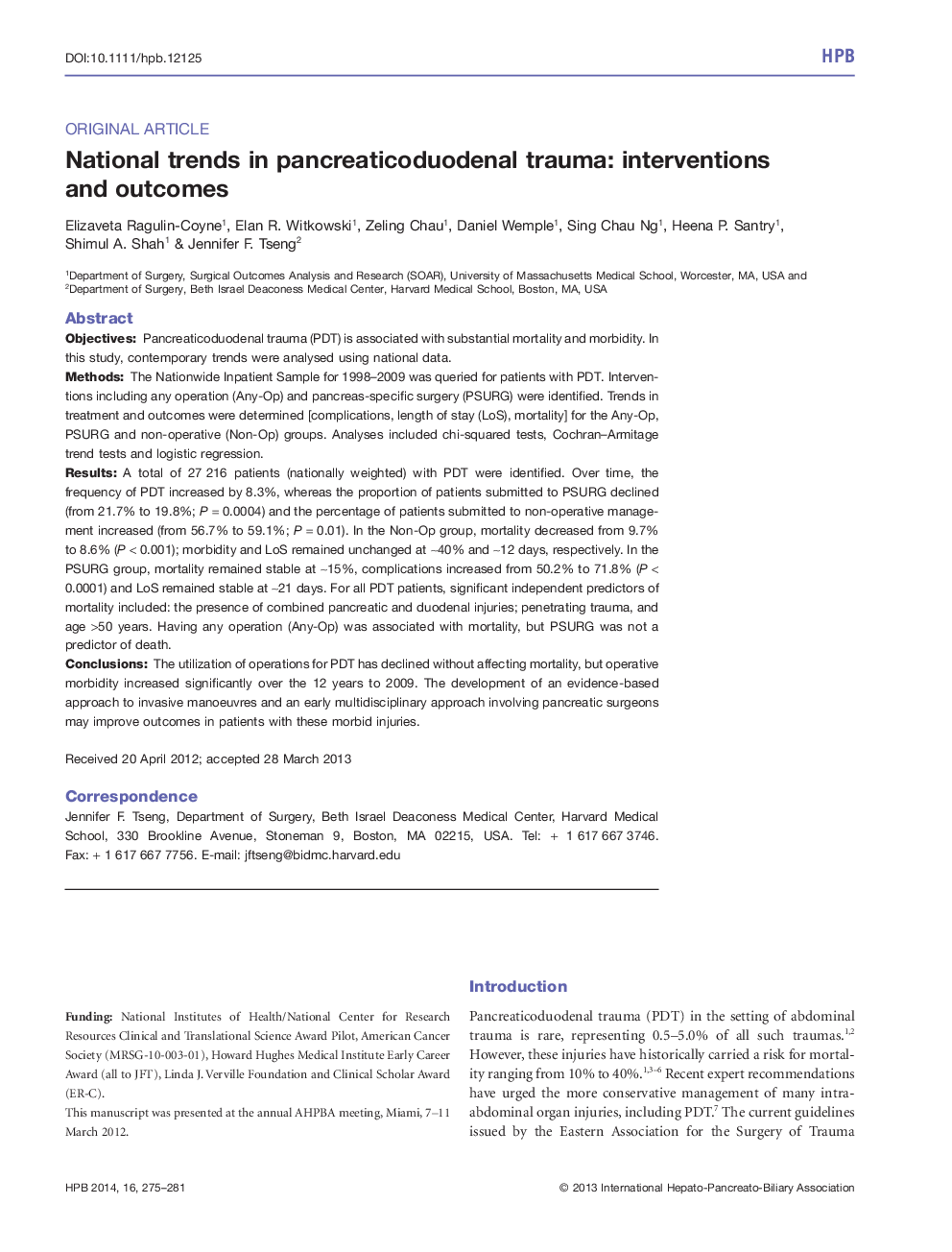| Article ID | Journal | Published Year | Pages | File Type |
|---|---|---|---|---|
| 3269006 | HPB | 2014 | 7 Pages |
ObjectivesPancreaticoduodenal trauma (PDT) is associated with substantial mortality and morbidity. In this study, contemporary trends were analysed using national data.MethodsThe Nationwide Inpatient Sample for 1998–2009 was queried for patients with PDT. Interventions including any operation (Any-Op) and pancreas-specific surgery (PSURG) were identified. Trends in treatment and outcomes were determined [complications, length of stay (LoS), mortality] for the Any-Op, PSURG and non-operative (Non-Op) groups. Analyses included chi-squared tests, Cochran–Armitage trend tests and logistic regression.ResultsA total of 27 216 patients (nationally weighted) with PDT were identified. Over time, the frequency of PDT increased by 8.3%, whereas the proportion of patients submitted to PSURG declined (from 21.7% to 19.8%; P = 0.0004) and the percentage of patients submitted to non-operative management increased (from 56.7% to 59.1%; P = 0.01). In the Non-Op group, mortality decreased from 9.7% to 8.6% (P < 0.001); morbidity and LoS remained unchanged at ∼40% and ∼12 days, respectively. In the PSURG group, mortality remained stable at ∼15%, complications increased from 50.2% to 71.8% (P < 0.0001) and LoS remained stable at ∼21 days. For all PDT patients, significant independent predictors of mortality included: the presence of combined pancreatic and duodenal injuries; penetrating trauma, and age >50 years. Having any operation (Any-Op) was associated with mortality, but PSURG was not a predictor of death.ConclusionsThe utilization of operations for PDT has declined without affecting mortality, but operative morbidity increased significantly over the 12 years to 2009. The development of an evidence-based approach to invasive manoeuvres and an early multidisciplinary approach involving pancreatic surgeons may improve outcomes in patients with these morbid injuries.
